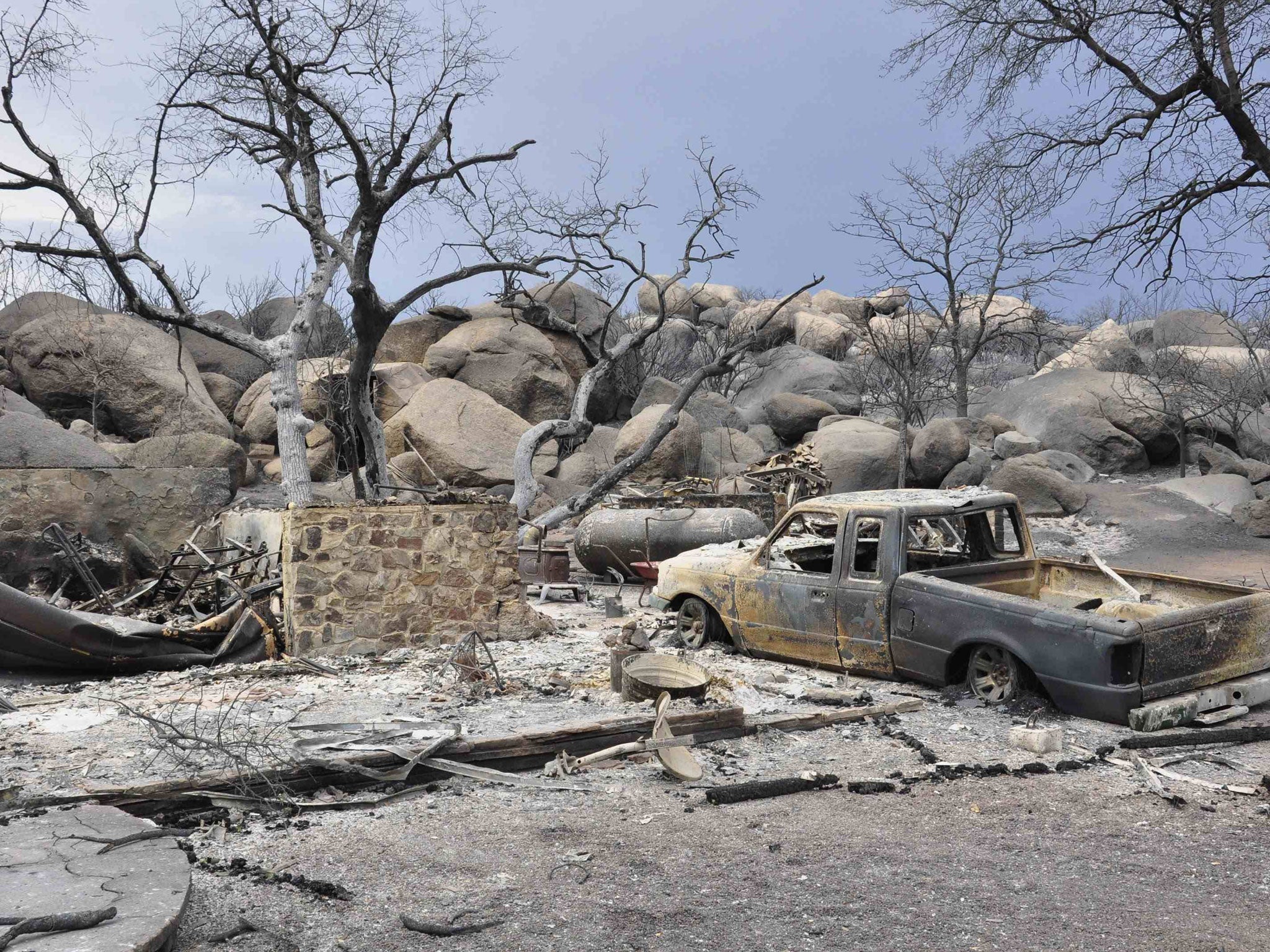Climate change fanned the flames of the Arizona wildfire
Out of America: As summers get hotter we will see more blazes like the one that killed 19 firefighters last week


The show must go on – and so it was that Prescott celebrated Independence Day as usual last week, with parades and what it bills as "The Oldest Rodeo in the World", first held in 1887. This year, however, the festivities in the one-time frontier town in Arizona's high desert were darkened by tragedy. Just four days earlier, 19 of the town's finest young men had died in the deadliest single incident for US firefighters since the New York terrorist attacks of 9/11.
They were members of the Granite Mountain Hotshots – part of the local fire department, to be sure, but one of 100 Hotshot teams across the country, engaged in the arduous and highly skilled work of bringing wildfires under control. Most were in their 20s; many had started families. All were resilient and super-fit, capable of running 10 miles in their boots while carrying a 40lb pack. But last Sunday afternoon, those skills were not enough to save them.
The unit was combating a blaze near Yarnell, a few miles south of Prescott. It appeared no big deal, a fire covering a mere dozen square miles or so. But at around four in the afternoon a thunderstorm struck, with lightning and viciously swirling winds. In an instant a towering wall of flame raced towards the Granite Mountain Hotshots, leaving them with no way to escape.
According to post-mortem reports, they perished from burns, carbon monoxide poisoning or oxygen deprivation, in some cases a combination of all three. There was just one survivor, a lookout posted a mile away who gave a warning but was forced to leave as the blaze approached. A few minutes later the place where he was standing had been incinerated as well.
Wildfires are part of the eco-cycle across vast swathes of the US. In moderation they are beneficial, clearing dead wood and undergrowth, helping coniferous forests to regenerate by heating cones to the point where they germinate. They are associated above all with the semi-arid upland and mountain tracts of the West – Arizona, California, Nevada, Colorado and the like – but oddly, the very worst in American history occurred in usually temperate Wisconsin, on the shores of the Great Lakes.
Few know about the great Peshtigo storm on the night of 8-9 October 1871, when, after a dry and scorching summer, lightning set off an inferno that incinerated Peshtigo and a nearby town within two hours, killing at least 1,500 people. Survivors' accounts suggest what happened was akin to the man-made firestorms inflicted by the Allies on Dresden and Tokyo in the Second World War, fuelled by storm-force winds created by the intensity of the fire.
Compared with Peshtigo, which devoured 1.2 million acres of land (almost 1,900 square miles), the Yarnell disaster was small beer in geographical terms. But the result for anyone close was the same. The dynamics of wildfires are unpredictable and lethal – never more so than in an Arizonan summer cocktail of bone-dry conditions, rugged terrain and triple-digit temperatures. Throw in a storm generating fierce "outflow" winds that veer in any direction, and anything can happen.
Nothing suggests that standard safety rules were broken. Photos texted by the firefighters before the calamity show they were cutting containment lines along the edges of the fire – not, far more dangerously, directly across its path. It seemed "innocuous, a little ol' puff of smoke", Jim Paxon, an expert in wildfire management, told the Arizona Republic newspaper. But suddenly the thunderstorm arrived. A soft breeze gave way to 50mph gusts that switched the direction of the fire and gave it terrifying speed.
More alarming even than the fire itself is the trend it represents. Wildfires are increasing in both number and ferocity. Barely a decade ago, they devoured around three million acres a year. Today, the average is more than double that; in 2012, 9.3 million acres, or 14,500 square miles (almost a third the area of England), went up in flames.
One reason is the climate change that propels other extreme weather events. America's West is becoming both drier and hotter: witness the near-record 120F (49C) temperatures in Arizona's capital, Phoenix, last weekend. Moisture that used to fall as winter snow on the mountains today increasingly comes as rain, which evaporates more quickly. In future, say climate specialists, we can expect still fiercer and longer summers, and shorter, wetter winters.
Demographic pressures are taking a toll too. For half a century, America's population has been shifting south and west. New housing is springing up where wildfires have always been a risk – which also raises an ethical question: should firefighters be asked to risk their lives protecting buildings that should never have gone up? A similar argument applies to new homes on exposed coasts where hurricanes are a constant risk. Ocean views, like magnificent wilderness scenery, carry risks all too often overlooked.
Then there's the problem of money. The government spends some $2bn (£1.3bn) a year on firefighting, compared with $250m only 20 years ago. Now there's the famous sequester, trimming spending virtually across the board for "non-vital" federal agencies. Individual states too are feeling the pinch. Cutting back on routine forest management such as brush clearance makes devastating fires more likely.
Today, a ceremonial procession of 19 hearses, each accompanied by a motorcyle escort, will carry the bodies of the perished Granite Mountain Hotshots the 80 miles from Phoenix to Prescott, where a memorial service will take place on Tuesday. Word is that President Obama himself may attend. As for the Yarnell fire, it is now mostly contained. But across the country, some 20 other wildfires blaze, one of them not far from Prescott itself.
Join our commenting forum
Join thought-provoking conversations, follow other Independent readers and see their replies
Comments